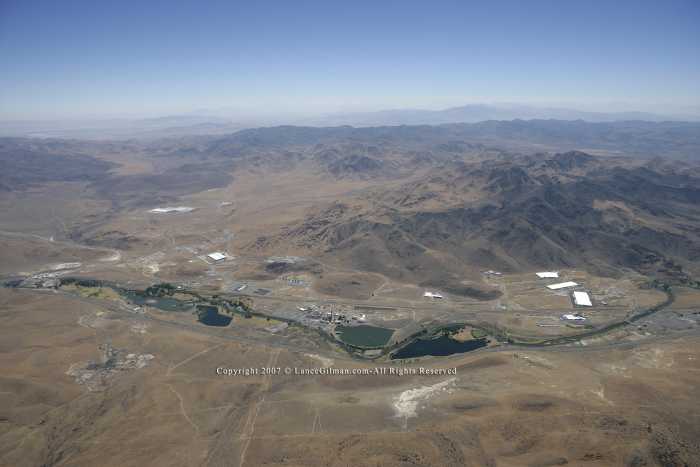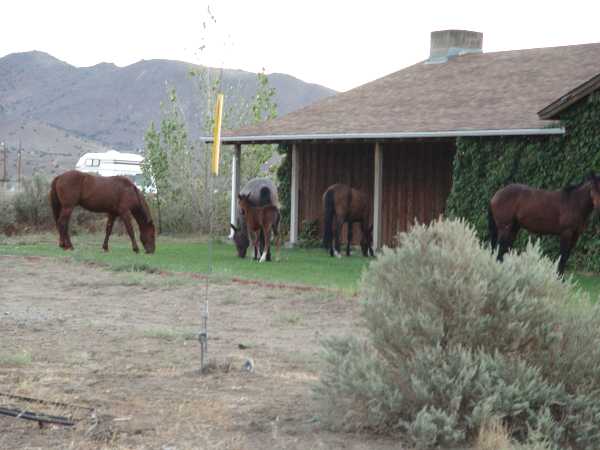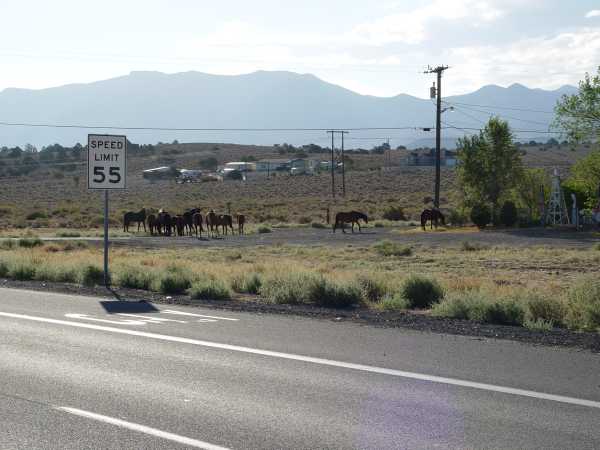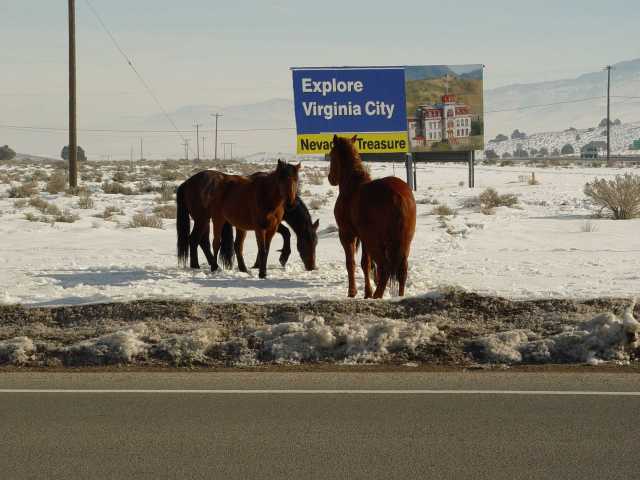Back home on the Range
|
|
NEVADA WILD HORSES RETURNED TO THE RANGE
Story date: January 11, 2008
|
In an age when it seems like our public agencies are trying to remove increased numbers of wild horses from our western lands, a consortium of field experienced wild horse groups, the largest industrial park in the world and the Nevada Department of Agriculture are returning 55 previously captured wild horses to the range. Why? It's good for the horses, it's good for business and it's what the public wants.
View of the northern end of the center, looking south from I-80 at the Tracy Power Plant.

The Tahoe Reno Industrial Center, also known as TRI, is located in Storey County about 15 minutes east of Reno alongside Interstate 80. The center comprises more than 100,000 acres of very varied topography. It includes about 30,000 acres of valleys and rolling hills appropriate for development and about 70,000 acres intended for preservation as open space and wildlife habitat. The entire development was designed to be "green," including multiple recycling of water, efficient transmission of power, a rail line, roadways designed for vehicle efficiency and construction designed for maximum compatibility with the center's natural elements. The center is also high tech including boasting such features as a complete broadband fiber optics network.
Developer Lance Gilman understood that many high end companies would prefer to locate in a high tech but scenic industrial center that didn't resemble suburban Los Angeles. Northern Storey County was the natural location for a marriage of business and nature.
The center is home to about 450 Virginia Range wild horses although the population varies throughout the year as the horses migrate according to the seasons and weather. According to Gilman, most of the businesses are enchanted by the presence of the horses. Gilman recounted several instances where CEOs spent more time being driven around to view horses than comparing sites upon which to place their buildings. As Gilman says, "It's an experience you don't get anywhere else."
In 2007 Nevada was once again the fastest growing state in the union. Northern Nevada was no exception. Development in the areas surrounding the Virginia Range continued to absorb traditional wild horse habitat. The Virginia Range is home to between 1200 and 1400 wild horses, making the Virginia Range herd one of the largest herds in the world based on average population. The Virginia Range horses fall under the jurisdiction of the Nevada Department of Agriculture.
Careless planning commissions allowed a number of developments in wild horse and cattle ranges without requiring relatively inexpensive measures to prevent horses from entering newly developed areas. As a result the state was trapping and relocating hundreds of horses. Those that returned to residential and commercial areas, often attracted by tasty landscaping or well meaning citizens who illegally fed the horses, had to be permanently removed.
Foals learn survival skills from their elders. In these situations they learn to mooch.

The horses also become desensitized to human activities and traffic


Since the state took over management of the Virginia Range horses in 2002 their primary management approach has involved trapping and removal. Horses accumulated in the state corrals faster than adoption groups could place them. Additionally some horses were simply to old or too plain to attract adopters. The Department of Agriculture had to pay daily board to the prison industries department, Silver State Industries, and the board bills were mounting up. Due to a state budget crunch Governor Gibbons ordered all state departments to trim their budgets and the horses had to go.

|




